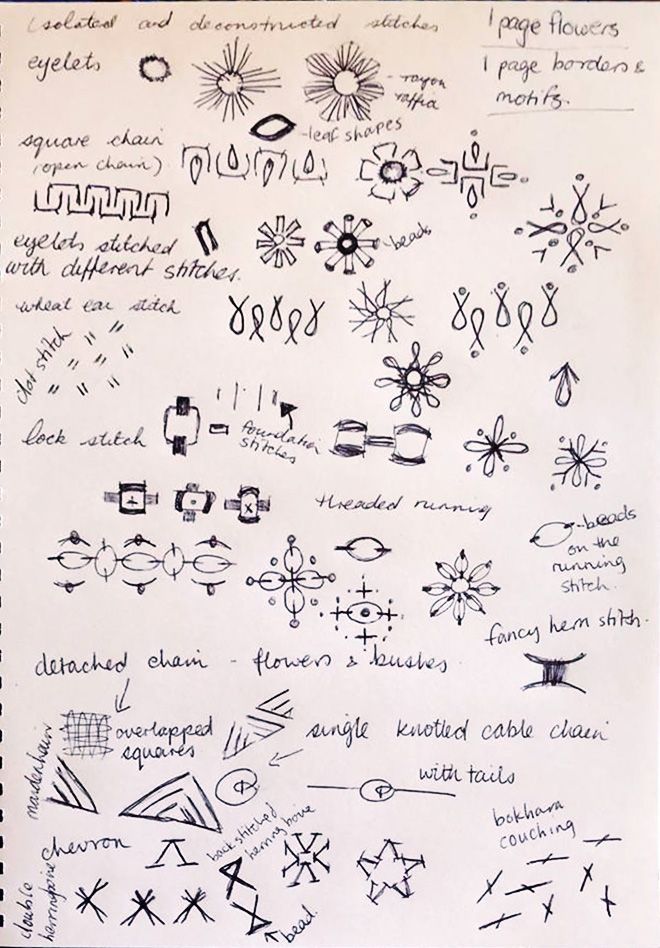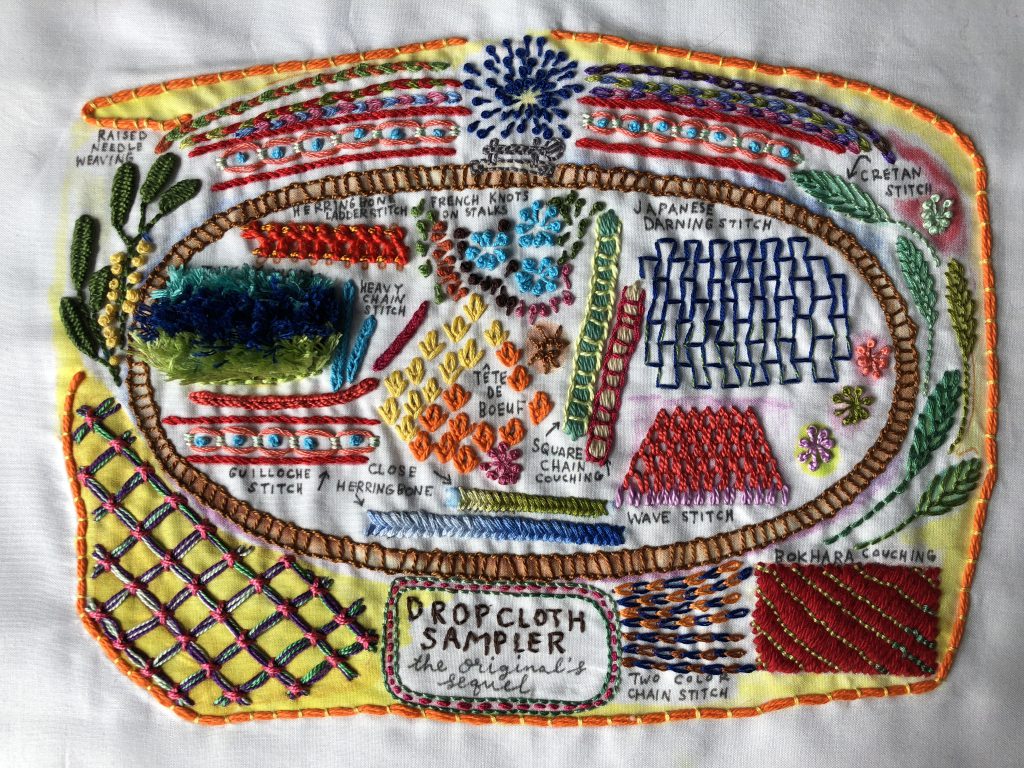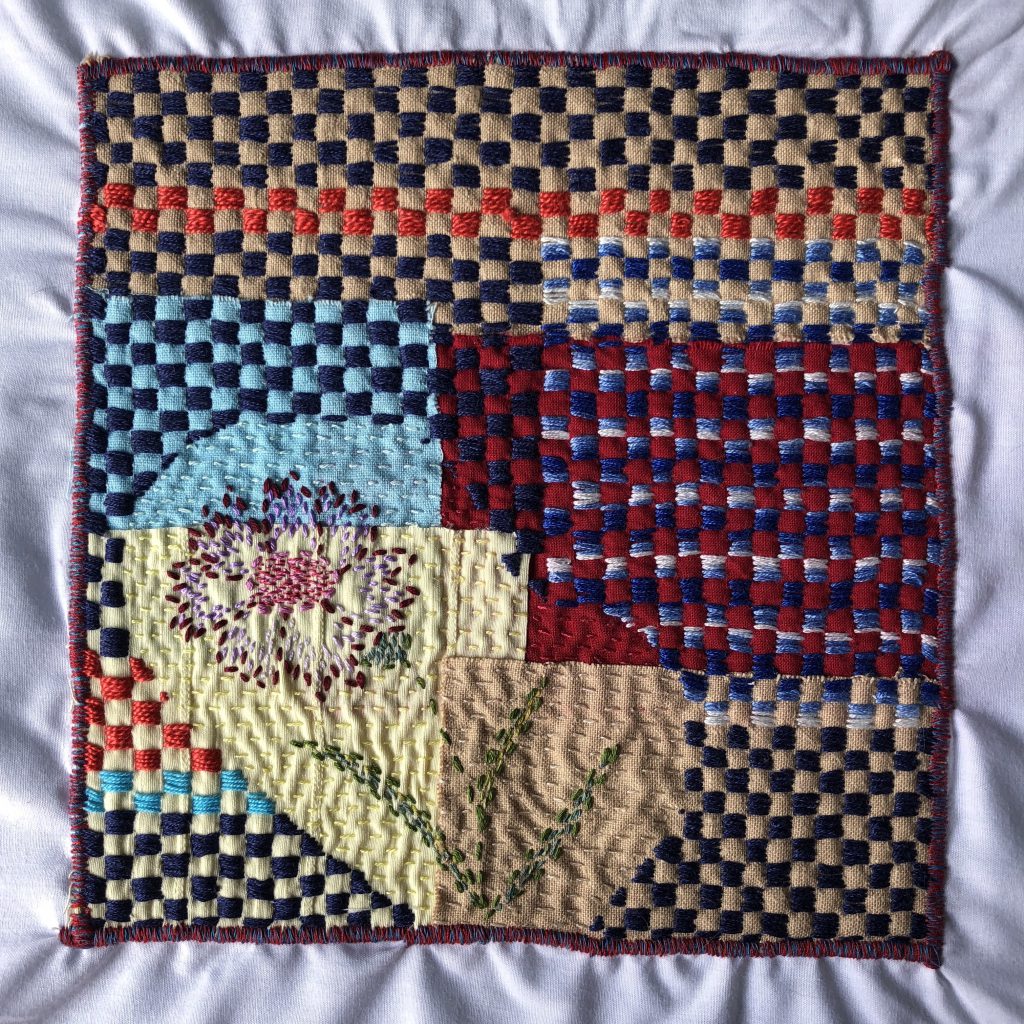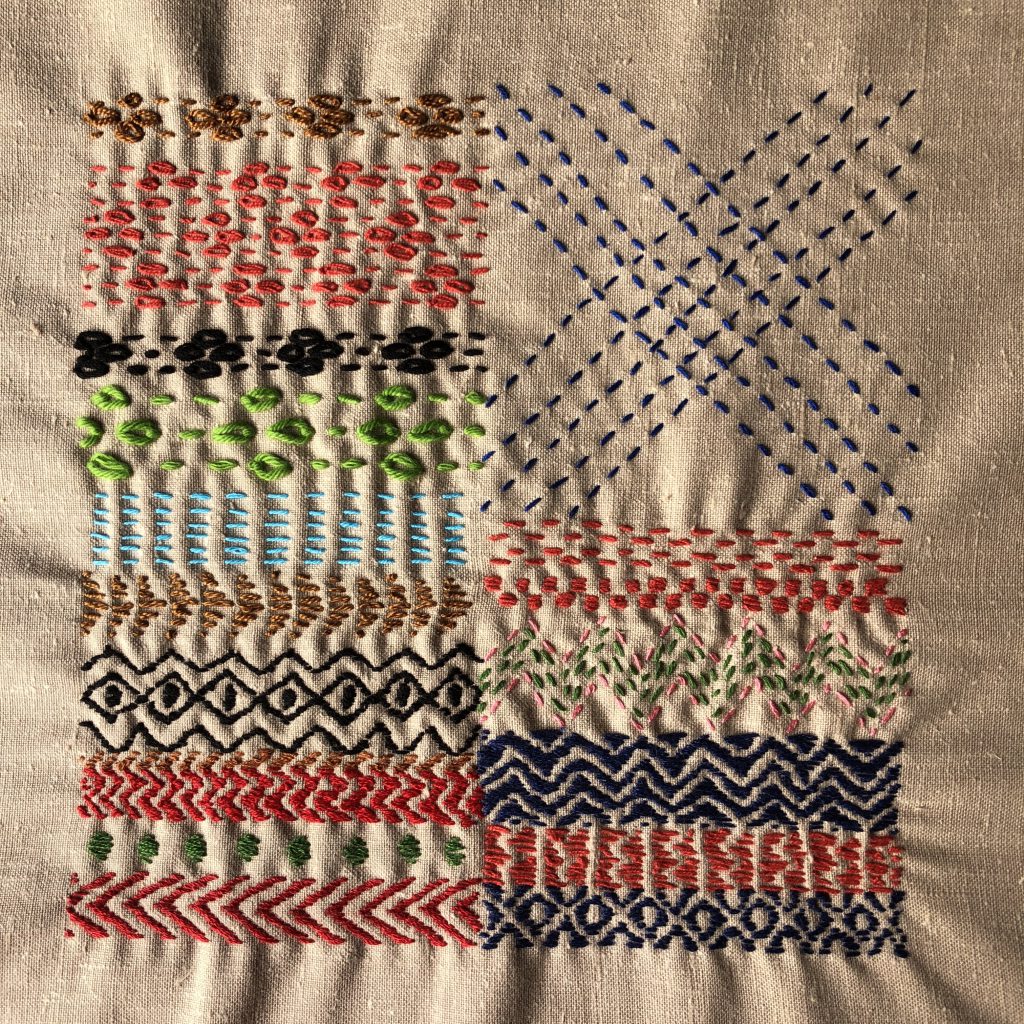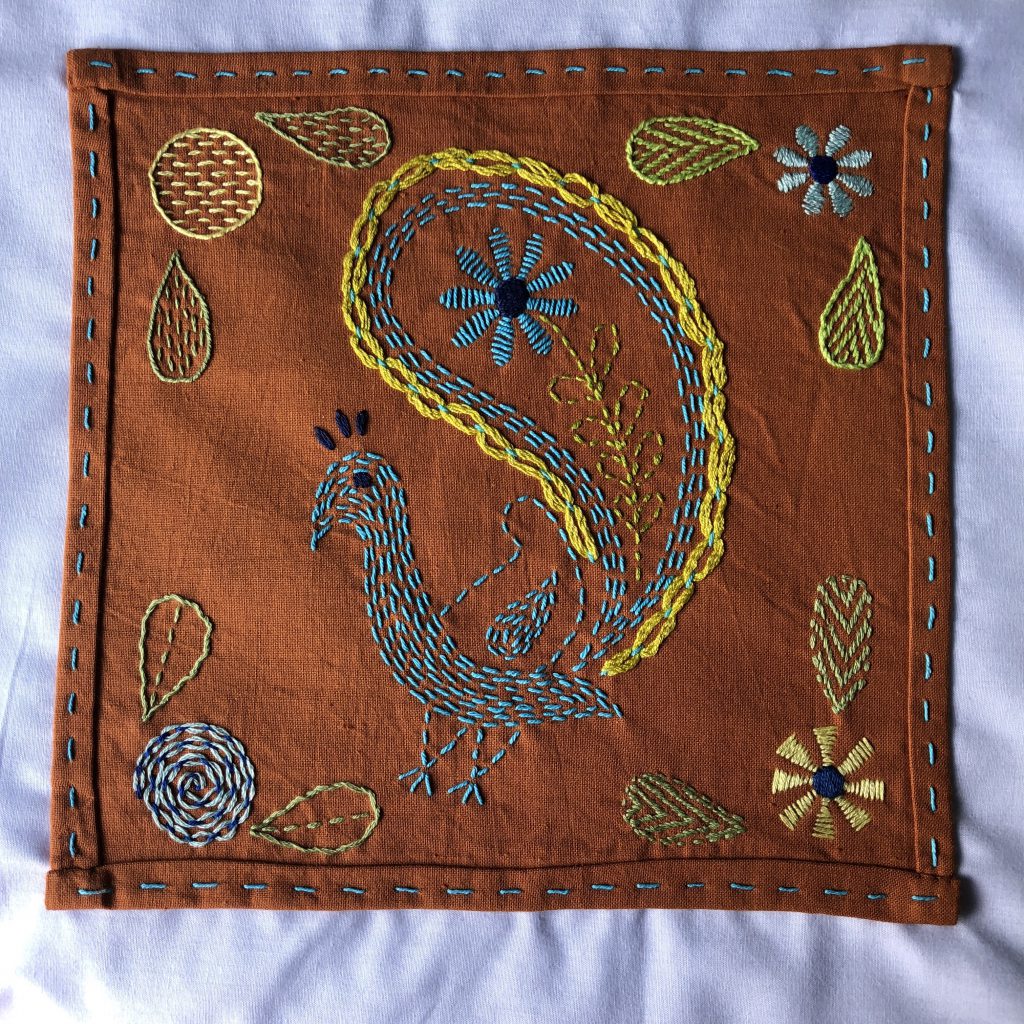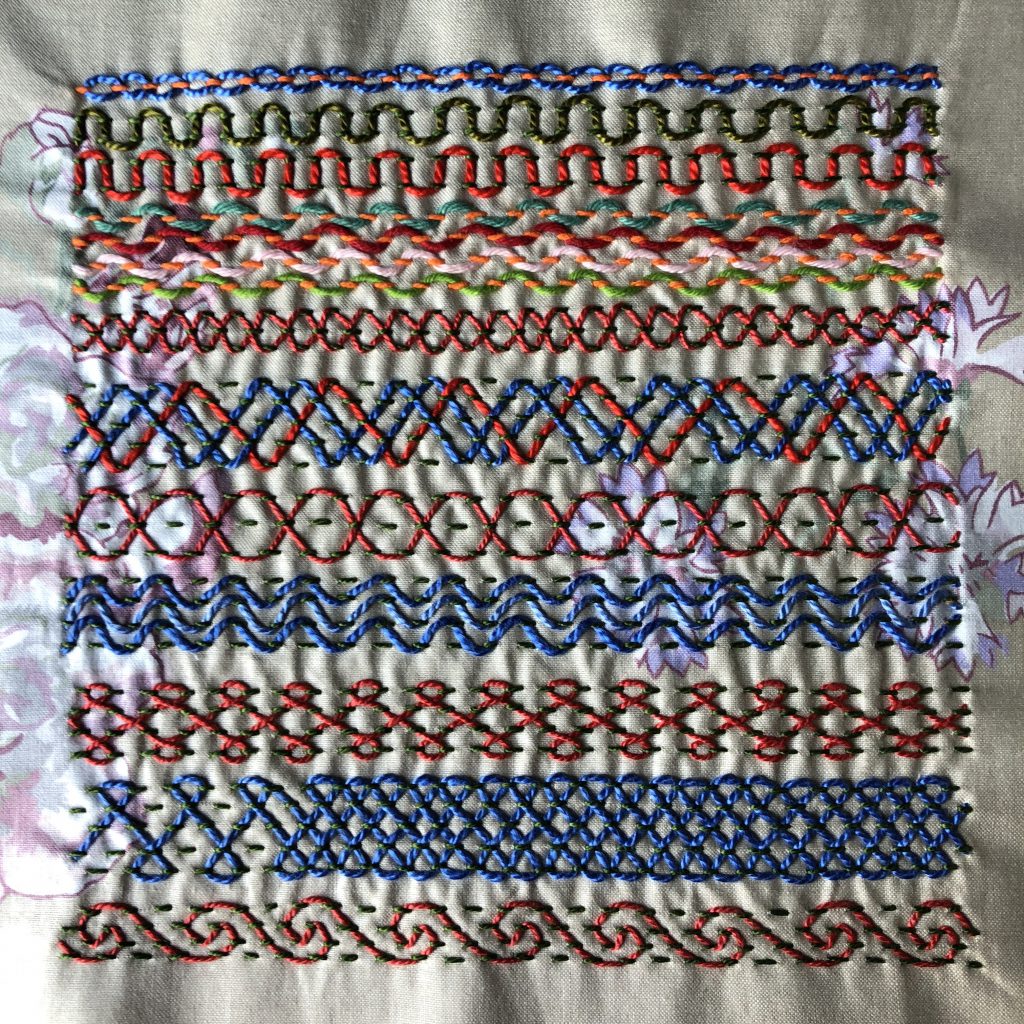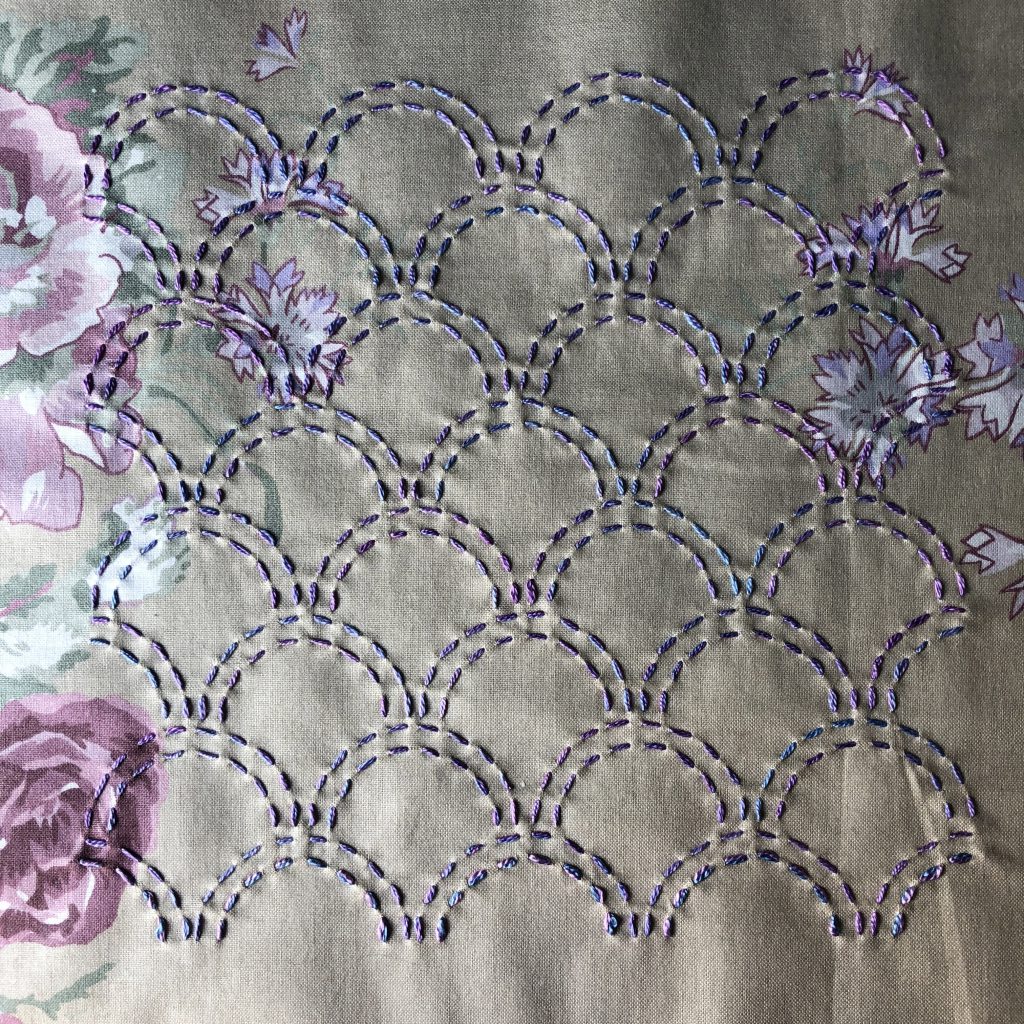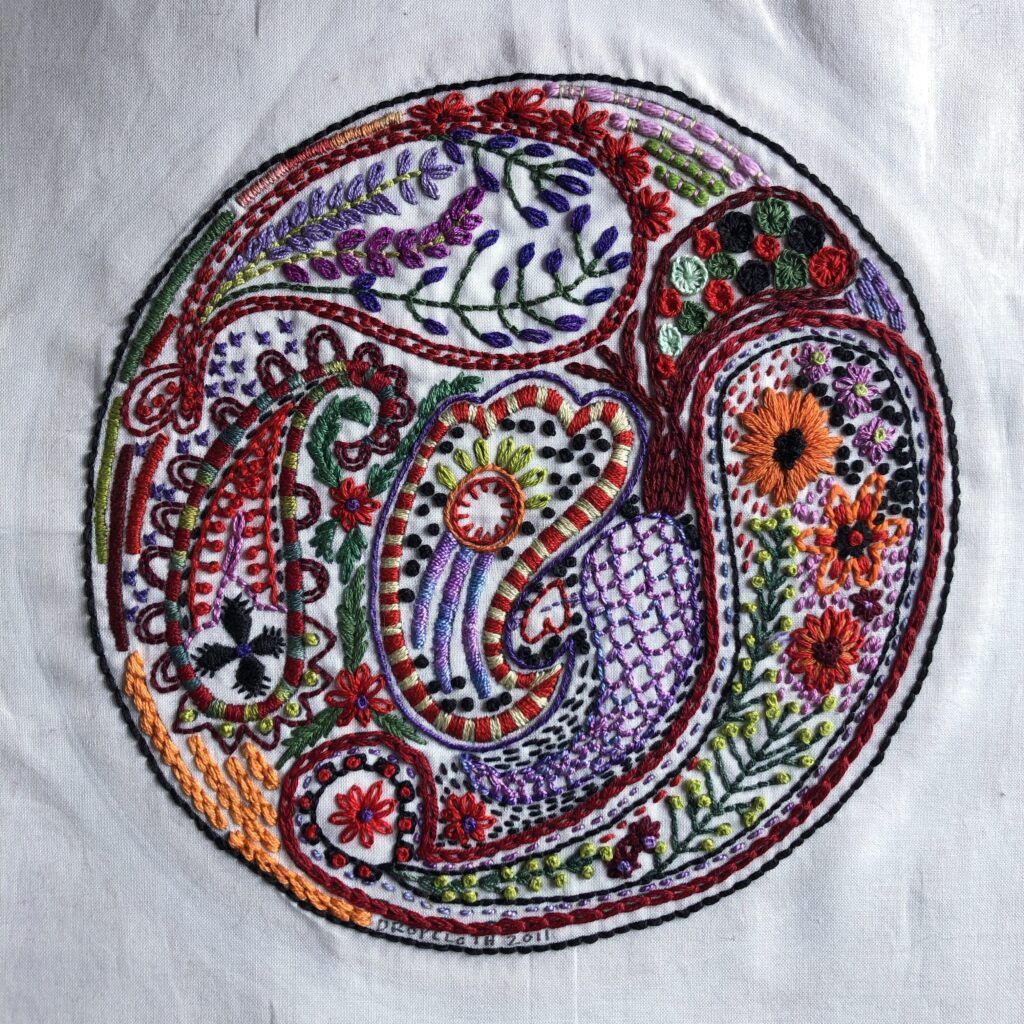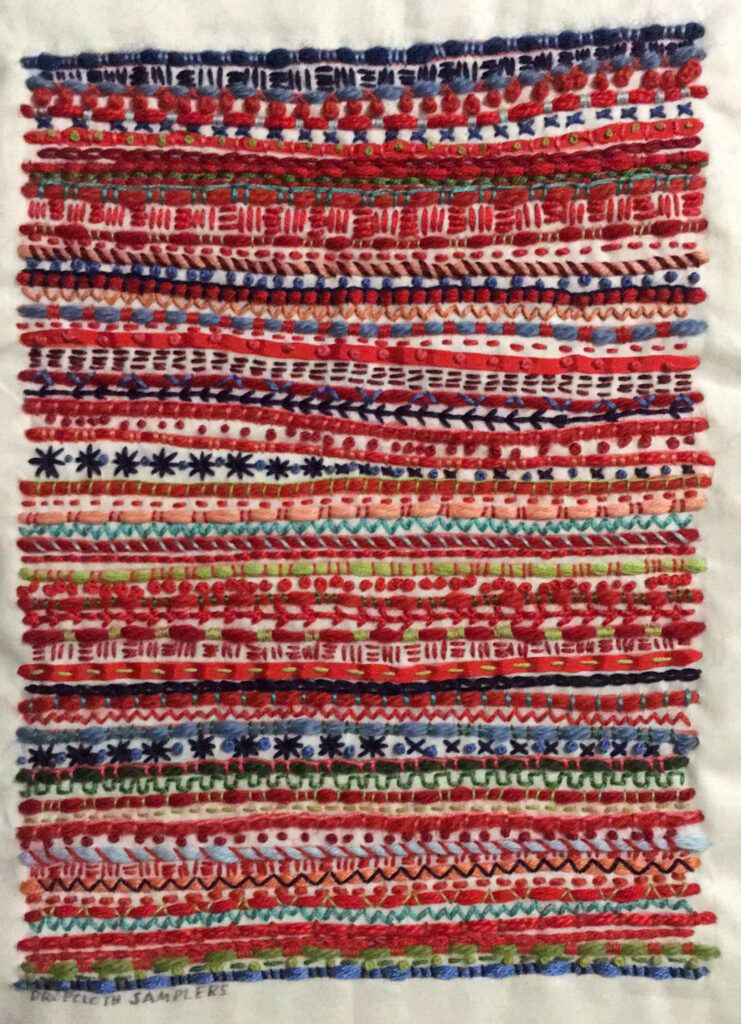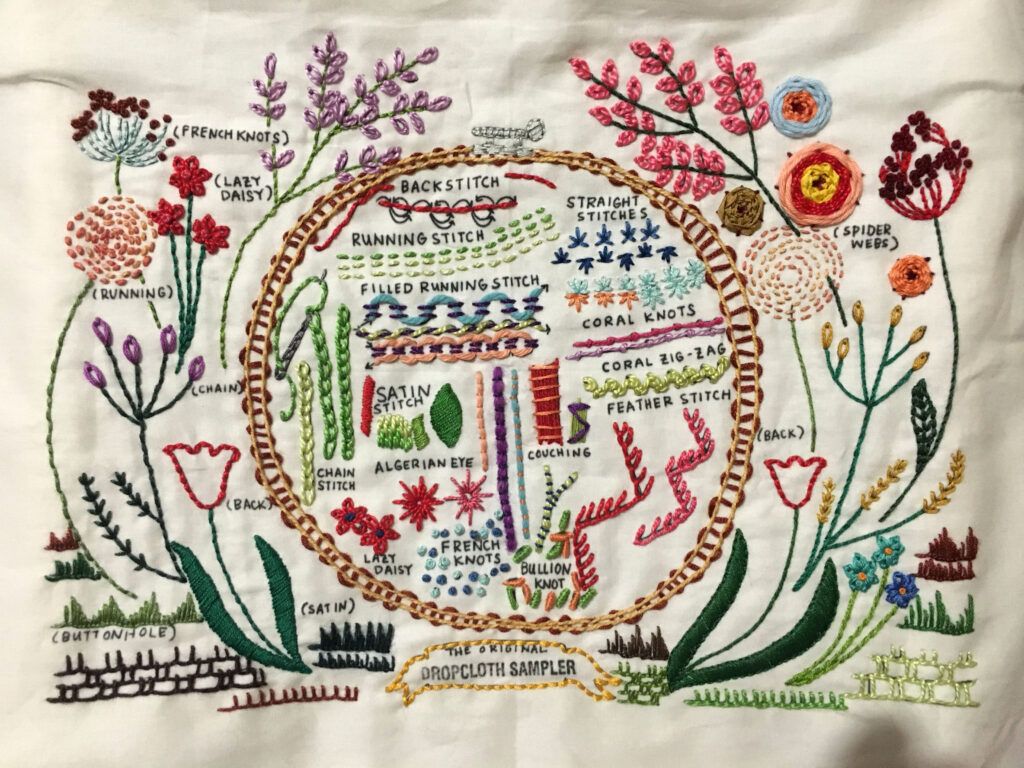A new challenge for Beyond TAST came out this week: exploring isolated stitches. Seeing how they can be used, made into patterns, or created from other stitches that usually form lines and fillings. For example, chain stitch is a line and filling stitch, with lazy daisy (aka detached chain), being the isolated version of the same stitch.
I grabbed a few of my embroidery books that I thought might help me come up with some ideas. Stitches: New Approaches by Jan Beaney, The Batsford Encyclopedia of Embroidery Stitches by Anne Butler
, and The Stitches of Creative Embroidery (later edition) by Jaqueline Enthoven
.
I picked out a few different types of stitches to play with. If I didn’t restrict myself then I’d end up with eight zillion samplers!
I chose open chain, eyelets, wheat ear stitch, lock stitch, threaded running, and maidenhair stitches as my main stitches. Others I may include if I have time are dot stitch, fancy hem stitch, knotted cable chain, bokhara couching, double herringbone, backstitched herringbone, detached chain and chevron stitch. I wanted to include some stitches that are already isolated, and some that are single sections of a repeating stitch (like maidenhair stitch).
After doing a bit of research, I usually start by scribbling whatever ideas I can come up with in my sketch book.
Thoughts so far:
- I might give eyelets their own page as I’ve never experimented with them before.
- Try the different stitches in different motif and flower styles, e.g. four spoke cross, six spokes, eight spokes, twelve spokes, circles and ovals.
- Use stitches as texture by overlapping.
- Move bits of the stitches around to different places.
- Lengthen parts of the stitches. E.g. detached chain becomes long tail chain.
- Isolated stitches used as a filling. Dot stitch is a typical isolated stitch used as a filling stitch, what happens if other stitches are used this way?
And that is where I’m at so far! Now I just need to grab some fabric, pick out some threads and get stitching. I have a feeling this is going to take a while.

Please note: This post contains affiliate links to Amazon.com. I won’t receive a commission if you purchase the linked books but may do if you purchase a new item after clicking these links.


